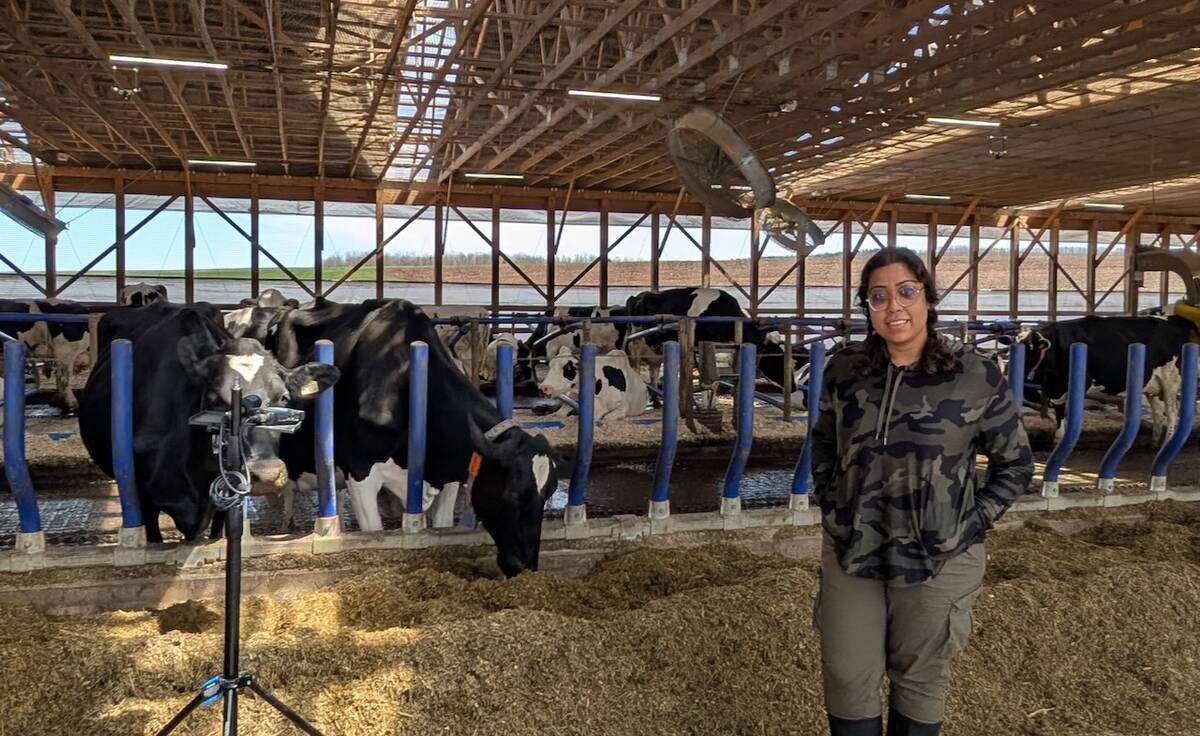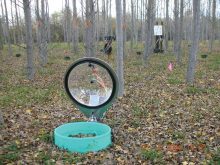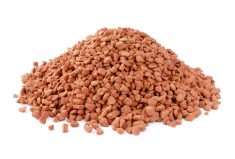It’s been proven to increase grain yield, seed protein content and nitrogen use efficiency by up to 19, 30 and 60 per cent respectively, and researchers are still finding more uses for it.
It’s called humalite, an organic soil amendment found exclusively in large deposits near Sheerness, about 25 kilometres from Hanna. It’s shaping up to be a made-in-Alberta solution for better nitrogen use efficiency, say researchers.
Some farmers have been combining the amendment with conventional fertilizers for years, but didn’t have scientific information on why it increased nitrogen content in soil.
Read Also

Moo translator and methane measures: There’s an app for that
Dalhousie University researchers use artificial intelligence to create new dairy farm apps that analyze cattle sounds and measure methane.
The University of Alberta stepped in.
“They were seeing some promising results but they didn’t know how much to apply and why it was increasing their yield and plant growth,” said Malinda Thilakarathna, assistant professor with the university’s department of agricultural, food and nutritional science.
“We also wanted to understand the mechanisms behind humalite and why it’s improving plant growth.”
Clayton Williams with WestMet Ag, the Hanna-based miner and manufacturer of humalite, in a news release pointed out the product’s value as a fertilizer supplement.
“The findings indicated that applying humalite can reduce synthetic fertilizer applications by enhancing fertilizer use efficiency, keeping money in growers’ pockets and improving plant growth and yield,” he wrote.
WestMet Ag also claims that humic products add carbon to soil, enhance microbial activity, improve water retention and accelerate crop residue breakdown.
“As growers receive pressure to implement environmental stewardship practices, we firmly believe that humalite can play a key role in allowing them to reduce fertilizer rates while maintaining quality and yield,” wrote Williams.
Humalite is produced from the decomposition and oxidation of plants and other vegetative tissues, said Thilakarathna.
Concentrated
The study of humic compounds is nothing new, but humalite is unique in its exceptional amount of humic acid (85 to 90 per cent), which is a plant biostimulant.
“I don’t think there are any other products you can get with that much humic acid concentration,” said Thilakarathna.
Humalite’s high concentration can be explained by its formation in a freshwater environment at a shallow depth where it can easily oxidize, he said. This environment also makes it low in heavy metal concentrations.
“Usually, saltwater-deposited compounds have high heavy metals,” he said. “The shallow nature of humalite improved humification through oxidation, which gave it a high humic acid content compared to other humic products such as leonardite.”
Researchers found that by applying synthetic nitrogen fertilizer (urea) along with humalite, they could improve soil N availability for a longer time compared to N fertilizer alone.
But nitrogen wasn’t the only nutrient for which humalite extended availability, said Thilakarathna.
“We found nitrogen, phosphorus and potassium (NPK) staying for longer periods in the soil and available for plant uptake.”
The university’s research found that humalite applications combined with urea resulted in 14 to 19 per cent higher grain yield, 23 to 30 per cent higher seed protein content, and 14 to 60 per cent higher nitrogen use efficiency.
In laboratory experiments, the researchers applied humalite to a variety of crops including wheat, canola and field pea.
They discovered that humic acid from humalite enhanced the root and shoot growth of wheat in particular due to the stimulation of key plant hormones.
“In greenhouse studies we found that humalite increases the yield and protein content of wheat by improving soil nitrogen availability for longer periods and increasing NPK uptake. Similar results were also found with canola and field pea.”
Field trials
The research isn’t confined to a laboratory. Linda Gorim, cropping system specialist with the university, is leading four small-plot trials in St. Albert, Westlock, Battle River and Oyen using crop rotations of wheat, canola and pea, said Thilakarathna.
“The results are promising. In fields we observed higher yields in wheat and canola while reducing synthetic nitrogen (urea) inputs,” he said.
The team is also looking into whether humalite can increase biological nitrogen fixation in legumes and exploring possible applications to enhance drought tolerance in crops.
“Currently we are doing some more experiments to understand how humalite also increased biological nitrogen fixation with different pulse crops and also with forage legumes to see if we can get more nitrogen fixation,” said Thilakarathna.
It’s uncertain whether the compound is most suitable for certain kinds of soils, but Williams said it’s most effective on poorer soils.
“By using humalite, the humic and organic levels in the soils are increased, improving the overall performance of the soil. WestMet has vast research being conducted on different soil type and crop types,” he wrote in an email.
Available
Humalite is approved by the Canadian Food Inspection Agency because it’s a raw humic product that falls under the approved category of primary supplement material, he added.
A Prairie-wide distributor of the product says most recent interest has come from Manitoba.
“A lot of our inquiries are in Alberta, but the majority right now are actually coming from Manitoba through one of our dealers, who’s kind of spreading the word out there,” said Michael Hendrickson, procurement logistics administrator with TopKrop.
Price depends on whether it is purchased in bulk or totes, Hendrickson said. The company’s bulk price is estimated at about $385 a tonne. TopKrop recommends applying 200 pounds per acre.
“We’ve seen increased bushels after typically two to three years,” he said. “No results in the first year, but the granular Humalite breaks down over time.”
That timeline may dampen farmer enthusiasm, he admitted, but given the price of inputs, he figures it’s worth it.
“I believe the price of it, combined with the application, kind of makes it a cheaper soil amendment compared to other ones.”
Greenhouse and laboratory experiments are supported by the Natural Sciences and Engineering Research Council of Canada and Mitacs. Field trials are supported by Results Driven Agriculture Research.
—With files from Alexis Stockford.
















